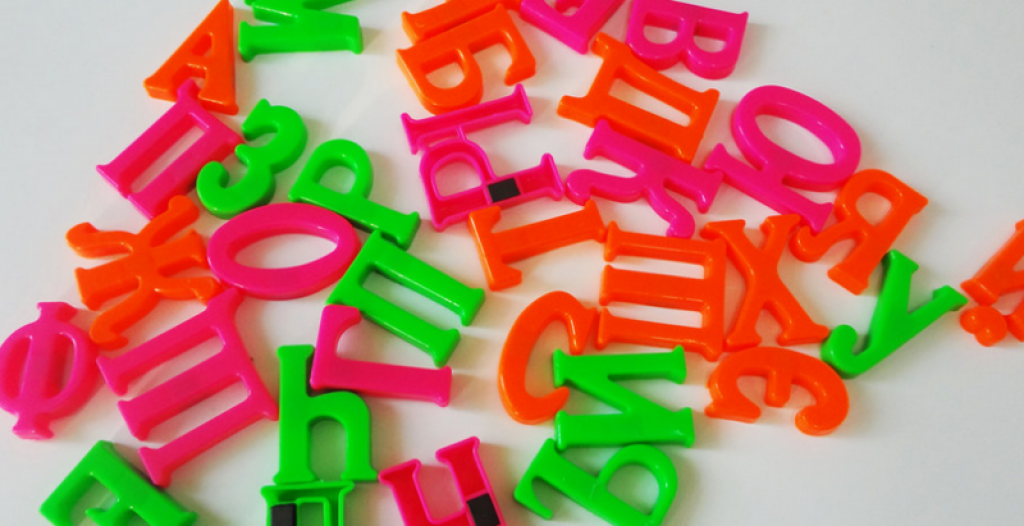Natalia Kolodina is a Russian Teacher at ICA in Arlington, VA and the Children Bilingual Study Institute in McLean, VA.
The number of US-based private schools, studios, and weekend classes offering Russian as a heritage language has increased in recent years. The question of whether poetry should be part of the curriculum in these settings is therefore more relevant than ever.
Because poetic texts are constructed according to certain rules, they can help bilingual children learn to read in Russian. Techniques like sound repetition, alliteration, assonance, and rhyme make children repeat the same letters and sounds, helping young bilingual readers prone to confusing letters in the Russian alphabet with similar-looking Russian or English ones. Even if a child forgets a letter the first time, rereading it several times (particularly out loud) enables her to memorize the letter’s symbol.
The difference between how Russian words are written and pronounced is a perennial problem for the fledgling reader of Russian. Rhyme and rhythm provide a guide that helps stress the correct syllable within a word, a crucial component of correct pronunciation and an often unpredictable challenge in the Russian language. Because the composition of sounds resonates with rhythmic stress in lines, the reader is able to place the correct stress — even in rare of unfamiliar Russian words. The result is a smoother and more successful reading experience that motivates the young bilingual reader to keep reading.
The depth and breadth of a bilingual child’s vocabulary is often limited to routine, everyday language. Poetry, on the other hand, can present students with new and unpredictable vocabulary, as well as neologisms. When a new word appears in a poem with an emotional undertone, it can contribute to its memorization. Poems draw the reader's attention to how the poet used words in a new way. Often young bilingual children don't understand texts due to limited vocabulary, but the emotional content of poems can help bypass this challenge.
Russian sentences can be constructed in a number of different ways, many of which are represented in poems. Poems contain more diverse array of sentences than prose of similar length. It is therefore reasonable to assume that a young reader encountering a poem will come into contact with a greater variety of sentence type than if they were reading prose. Because most children's poems are short, it is possible to gain an impressive breadth of literary experience in a relatively short period of time.
Pauses at the end of poetic lines are quite natural; furthermore, a pause in a poetic text produces a special cohesion among the words within the preceding line. This pause works perfectly with a bilingual child's need to catch his breath, giving him time to ruminate on the meaning behind a small number of words before continuing.
Young readers enhance their understanding by drawing both "horizontal" and "vertical" connections, that is, respectively considering both the words within a single line and among the different lines of a stanza. Armed with this knowledge, the young reader builds a metaphorical "tower" to help structure their understanding, leading to greater comprehension of the poem's meaning as a whole.
Pauses also allow readers to ask about an unfamiliar word, cultural convention, or piece of historical context. Because the "tower" is built according to a specific order, it is easy to identify misinterpretations as they happen. And, thanks to the pauses at the ends of poetic lines, readers have the chance to stop and think about their interpretations. The vertical and horizontal connections promote precise understanding, making mistakes easier to find without outside help — improving the child's sense of independence as a reader.
Rereading is very important for bilingual children since they must learn two different ways of reading. The Russian manner of reading is syllabic, while English reading is semi-hieroglyphic. Unlike prose, poetic writing has to be reread to grasp all its meanings and possibilities. Once fully assimilated in this manner, rereading becomes a useful strategy for young readers to employ in future texts they encounter.
It is impossible to read poetry without partially decoding the poet's encrypted message in the verse, should one be present. Because misunderstandings and multiple interpretations are a natural part of the experience of reading poetic texts, admitting confusion may not be as embarrassing for students as in other literary settings. Poems become a comfort zone, where it’s OK to not understand.
Poetic works address universal human emotions and experiences, allowing young bilingual readers to briefly inhabit the same universe as the average Russian or global reader. Overall, poetry expands children's imaginations, yielding new insight, understanding, and empathy.
The rhyme, rhythm, and repetition of metrical writing (verse) and the quick humor of nonsense poetry can further encourage a child to appreciate the beauty of Russian. Rereading poems, analyzing relationships among words, and memorizing poetic texts allows children to enrich and expand their knowledge of the language.



